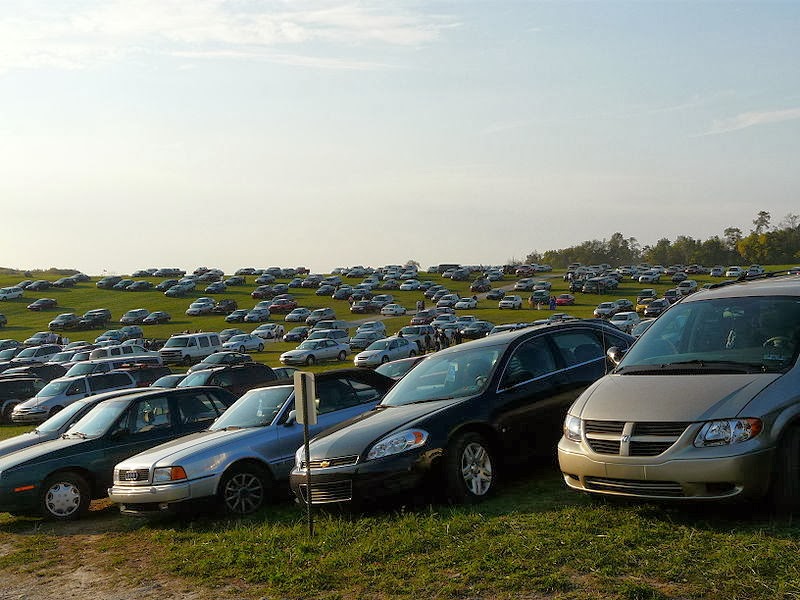by Peggy Robin
Has this ever happened to you? You have parked in a pay parking lot, spent less than an hour in the store, and returned to your car only to discover you’ve lost your validated ticket. Perhaps it just slipped into some unreachable crevice inside the car … or maybe it was dropped somewhere on the escalator leading back to the lot, and it’s long since been swallowed up by the machinery, never to be retrieved. So you’re stuck paying the full day charge, and it’s $14 or even $24.
Why should this be? In an age when your every phone call is logged saved forever (and not just by the company that you pay for the service but also by who knows how many government agencies), why should a flimsy piece of paper be needed to track the whereabouts of your car for an hour or two? It’s time for parking lots to enter the digital age. Here’s how it would work: Every space in a modern, electronically-monitored lot should have a sensor, a license plate image recorder, and a transmitter. When your car occupies a space, the system records the time in. When you move the car out of the space, it records the time out and wirelessly transmits the data to the exit gate. It’s like EZ Pass at tollbooths but with a lot more time between entry and exit. Perhaps the system could even be rigged to work on the same transponder. In that case you could pay the parking fee straight out of your EZ Pass pre-charged account.
What about store validation? f you have been in a store that pays for your parking, you would simply tell the store clerk your parking space number and the store clerk would sends a validation code to the exit gate. When you are at the gate, you can pay by credit card or cash, using a machine that can return change for anything up to a $20. That should also eliminate those long lines at pay stations that form when drivers are required to pay for parking before they retrieve their cars. And since there’s no paper ticket involved, there’s no more frustration as people feed the ticket into the machine wrong end first or upside down.
This paperless system would also incorporate improvements already in use at BWI and other airports, such as space indicator lights and sign boards. When you enter the multi-story lot, you see a sign telling you how many spaces are free on each level. When you arrive at a new level, you see a sign on each aisle telling you how many spaces are free in that aisle. And as you drive down the aisle, you see an overhead indicator on each space showing a green dot for an available space and a red X for an occupied one.
While Google is getting close to making the driverless car a reality (see http://www.youtube.com/watch?v=VCpPPVvGqTY), I’m afraid my automated pay parking lot idea is a far-off fantasy. And in that case, I'd better keep track of my parking tickets and remember to get them stamped!
------------------------
Still Life With Robin is published on the Cleveland Park Listserv, www.cleveland-park.com, and on All Life Is Local on Saturdays.


No comments:
Post a Comment